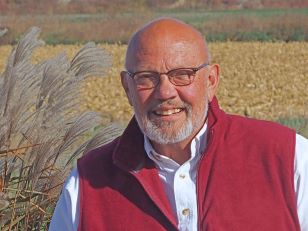
A couple of weeks ago, out west on the Oregon Trail, I couldn’t help being astounded by both the clockwork and the sheer number of Union Pacific long-haulers passing, one after another after another, on their way east, each heavy laden with coal, while, twelve feet away, the empties returned with in a chorus of squeaky, steely clatter.
Out west, the sheer size of things in this country, as well as its appetites, still strikes awe. The heavyweight processional DID NOT QUIT. Huge trains, like this one, kept coming, each of them hundreds of cars long, lugging piles of coal created so uniformly no human hand could have shaped or shoveled the cars full. Somewhere west, massive coal deposits were being rustled out of the earth and loaded into boxcars by massive machinery in order to carry all that coal–where? out east somewhere. Out east, period.
I’m not as green as I should be. With billowing fires destroying so much of the west coast, and lazy hurricanes inundating the gulf shore, you have to be willfully short-sighted not to find climate change concerning. The river behind us has suffered three 100-year floods in a year. Something’s amiss.
Truth be told, I believe in climate change primarily because the science types I know and trust tell me it’s folly not to, men and women who understand, and also see, this creation as belonging, first and foremost, to Him (upper case). If those friends tell me we face huge problems, if they’re fearful, I worry.
What little I know about coal is that it isn’t friendly. It’s not the fuel of the future–or at least so my friends maintain. It’s not at all clean. So I’m out there on the Oregon Trail oddly enough, freight after freight right beside me lugging mountains of coal east, and I can’t help thinking of climate deniers, the other guys, with meat heads and fat cat American appetites.
I’ve got a friend, happens to be a pastor, who’s a train aficionado, loves ’em, a man who can’t help but smile when local grain trains rumble by. I asked him about what I couldn’t help notice on the Oregon Trail. Where’s all this blasted coal coming from and, doggone it, who are the sinners that get it? Just where is it bound?
Powder River country, he told me, that’s where it’s from. It’s Powder River Basin coal. What I know about Powder River country is that once upon a time the spaces between its bountiful rivers offered the last hunting grounds of the Lakota and Northern Cheyenne. I didn’t know it was heavy laden with coal.

Forty percent of America’s coal is loaded on those freights beside me on my way west because forty percent of America’s coal originates in the open pit mines dug out of the Powder River Basin. The state of Wyoming produces more coal than any other state in the Union. Amazing.
I pulled out an old copy of Ian Frazier’s Great Plains because I remembered a particular Frazier jeremiad. “It is impossible to imagine a Cheyenne war party coming out of the canyon, because the canyon is gone,” he wrote. And more: “Strip-mined land is land thrown away.. . .Instead of adding a new layer to the palimpsest of the Great Plains, strip-mining destroys the palimpsest itself.”
And this: “A strip-mining machine could eat the Madison Buffalo Jump–a one-in-a-million piece of ground which fooled buffalo for thousands of years–for breakfast.”
What little I knew of coal suggested it was evil, that the world is going to be far better off when we stop using fossil fuels. Don’t people know?
With that mousey bit of knowledge, I’d watched those trains rumble past and shook my head at the idiocy, the endless succession of cars, plump with coal. Shame, shame.
But, my preacher friend explained that Powder River coal was about the best coal we can burn. It’s low sulfur content make it far less harmful to the environment than tougher stuff. Nobody bothered to mine it until environmentalists raised cane about its Appalachian cousin, which is far more hard and dirty.
Okay, I said, but where does all that dirty rotten tonnage go anyway?
Well, all over, he told me.

In its on-line state, this map is interactive, so I started clicking all over, even on the western shore of Lake Michigan, where I discovered the Edgewater Power Plant, Sheboygan, Wisconsin. Edgewater burns Powder River coal.

Been there. Often. Years ago, I got up early on clear Saturday mornings, drove out there, pulled on my waders, and fished right off the shore because it was rumored the power plant was emitting warm water salmon loved. I may have caught one or two, but then I’m even less a fisherman than I am a train buff or a green warrior. But I’ve been stood right there on Lake Michigan, and often.
I couldn’t help but feel something burning in me. The endless procession of low-sulfur coal from what was once prime buffalo country, the Powder River Basin, was getting consumed down the road from the little town where I was born. Me. All of that is my problem too. I was burning that coal, even the hard stuff. I was pointing fingers and waving ’em like weapons. It wasn’t just some yahoo who thought wind turbines or solar gardens were for girls. I was myself the guzzler, the red neck sinner.
That’s what I learned from the Union Pacific, a week or so ago, on a road trip along, of all things, the Oregon Trail.


